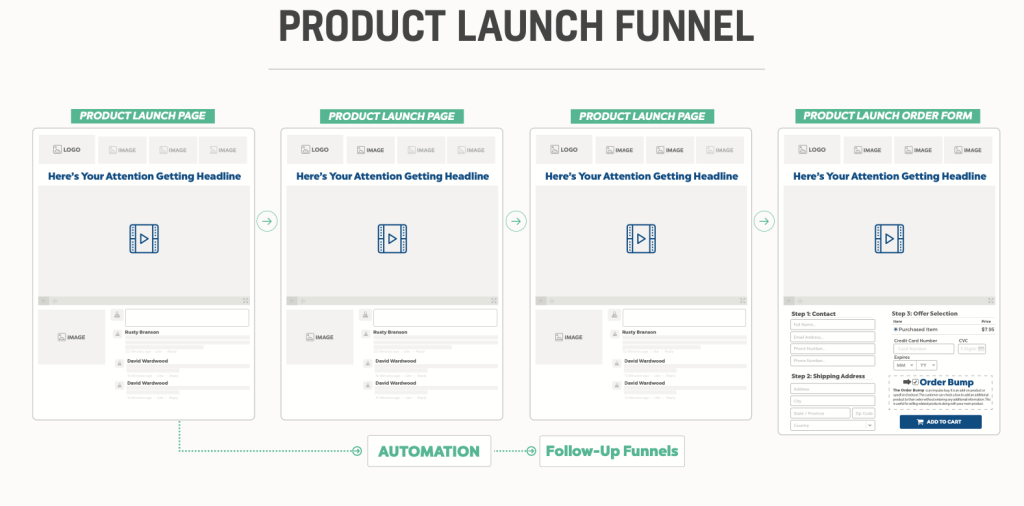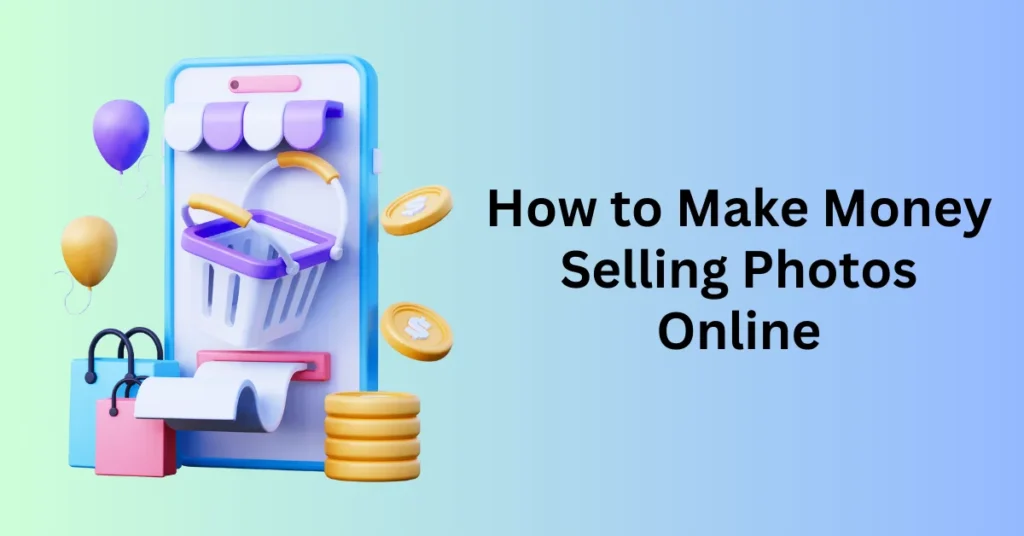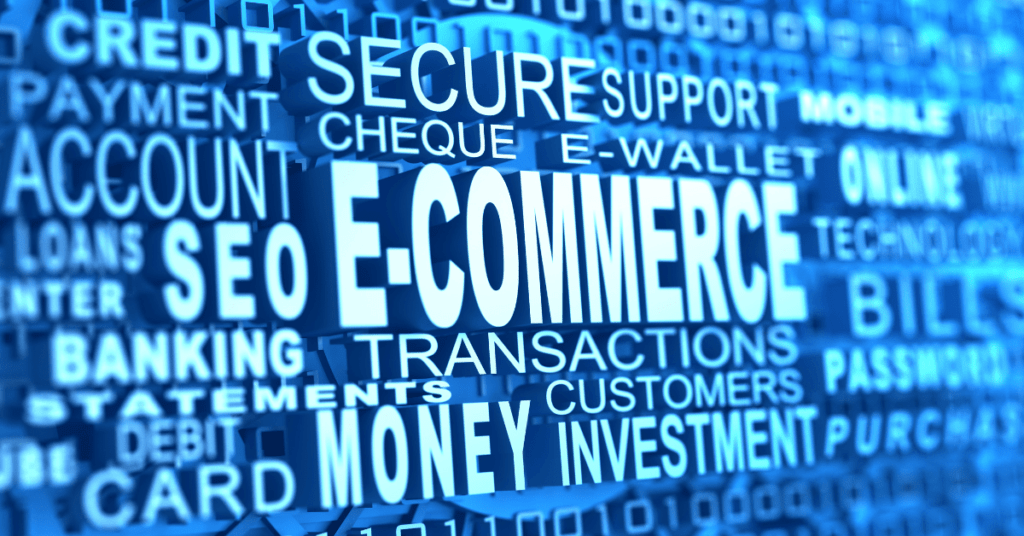Are you struggling to attract visitors to your website? Perhaps you’ve just launched your Shopify store and are disappointed by the lack of traffic. Or maybe you started off strong but have since hit a plateau, leaving you wondering how to get things moving again.
Regardless of whether your shop is brand new or you’re seeking to enhance existing traffic, mastering the art of attracting visitors is essential for your success. The more traffic your online store receives, the greater your chances of making sales, provided that your product appeals to your target audience (ensure you’re offering trending products on your Shopify store).
In this comprehensive guide, we’ll address your question: “How do I drive traffic to my Shopify store?” You’ll uncover various free methods to attract visitors, learn how to increase customer engagement, boost sales, and discover which paid strategies are worth the investment. But before diving into the strategies, it’s important to understand where traffic to Shopify stores originates.
Different Traffic Sources For Your Shopify Store

Studies reveal that the primary sources of website traffic include organic search, direct traffic, social media clicks, email marketing, and referral traffic. Each of these channels plays a crucial role in driving visitors to websites, contributing to overall web presence and success.
Search Traffic For Shopify Store
Search traffic is generated when users search for products or information on search engines such as Google. This traffic can be divided into two categories: organic and paid. Organic search traffic is the result of users finding your website through unpaid search engine results, influenced by the search engine’s algorithms. On the other hand, paid search traffic comes from users clicking on advertisements that appear in search engine results.
Direct Traffic For Shopify Store
Direct traffic occurs when a user types your website’s URL directly into their browser’s address bar. This usually indicates that the user is already familiar with your website, either through previous visits or brand recognition.
Referral Traffic For Shopify Store
Referral traffic is generated from clicks on links to your website found on other websites, excluding search engines. This type of traffic typically comes from third-party sites that link directly to your content, such as blogs, news articles, or business directories.
Email Marketing Traffic For Shopify Store
Email traffic stems from your email marketing campaigns. When recipients of your emails click on links within the message and visit your website, it indicates the effectiveness of your email content and strategy. For enhancing your email marketing efforts, consider employing some effective tips to boost engagement and sales.
Social Media Clicks For Shopify Store
Social media traffic originates from interactions and engagements on social media platforms. When users click on links to your website from social media posts, they contribute to social traffic. This type of traffic often results from brand mentions, shared content, or advertisements on platforms like Facebook, Twitter, Instagram, and LinkedIn.
According to Sixads, a significant portion of visitors to Shopify stores comes from organic traffic. This is particularly beneficial since organic traffic is free, and driven by unpaid search engine results. However, to attract and increase organic traffic, investing in search engine optimization (SEO) is essential. SEO involves various tactics to improve your website’s visibility and rankings on search engines like Google, Bing, and Yahoo. In the next section, we will explore effective SEO strategies to help you boost your organic traffic and enhance your online presence.
Start Your Shopify Store Today with Free Trial
How To Drive Traffic To Your Shopify Store

Now that we’ve identified relevant traffic sources, it’s time to consider which tactic for increasing traffic would work best for you.
There are two types of traffic-increasing tactics—short-term and long-term. Short-term tactics yield quicker results but require more maintenance or reinvestment. Long-term tactics require minimal maintenance but take longer to produce results.
Before implementing any tactic, do a cost-benefit analysis to measure the benefits and costs of taking that action.
You also want to consider factors like the effort, ROI (return on investment), cost, and traffic potential of each tactic. We’ve categorized each tactic to make it easier. Let’s dive in!
Social Media Engagement
Using social media to drive traffic to your website can be highly effective over the long term. Platforms like Instagram, Facebook, and Pinterest offer unique opportunities to engage with your target audience and build meaningful connections.
Create Compelling Content
To drive traffic through social media, start by crafting compelling content that resonates with your audience. Avoid posting randomly. Instead, develop a content marketing strategy based on thorough research of your target audience and their interests. Share your brand story and demonstrate how your product can enhance their lives. Effective content should provide valuable information, entertainment, or inspiration that encourages sharing.
Engage with Your Followers
Active engagement on social media is crucial for building a community and fostering trust. Respond to comments and engage with your followers’ posts. Mention relevant people on platforms like X (formerly Twitter) and contribute valuable insights. Avoid being overly promotional. Instead, offer genuine advice to help potential customers solve problems, ideally with solutions your product provides. The more you interact with your followers, the more likely they are to continue engaging with and promoting your brand.
Leverage on Your Personal Networks
If you’re just starting out and lack followers, ask family and close friends to share your website on their social media feeds. These individuals are often willing to help out of goodwill. It’s important not to pressure them into purchasing your products; simply sharing your site with their network is a significant favour. Notably, 92% of consumers trust recommendations from friends and family over advertisements.
Run Giveaways
Giveaways can generate excitement and drive traffic to your online store. Studies show that 54.4% of people share promotions on social networks. Additionally, creating a customer loyalty or referral program can encourage repeat purchases and attract new leads.
Choosing the Right Platform
When deciding which platform to focus on, consider that nearly two-thirds of social media visits to Shopify stores come from Facebook, which also accounts for 85% of social media-driven sales. This makes Facebook a particularly valuable platform for driving traffic and sales.
By implementing these strategies, you can effectively use social media to increase traffic to your website, build a loyal customer base, and enhance your brand’s online presence.
Search Engine Optimization (SEO)

The next long-term tactic to boost your website traffic, which is also free to implement, is search engine optimization (SEO). While it requires time and effort, SEO has immense potential to drive significant traffic to your site.
What is SEO?
SEO, or search engine optimization, involves enhancing your website’s visibility on search engines like Google and Bing. The objective is to make it easier for people searching for products you offer to find your website. Considering that 49% of online shoppers worldwide use Google to find products, SEO is crucial for online businesses.
The higher your pages rank in search results, the more likely people are to click on them—27.6% of users click on the top search result. Think about how often you scroll down past the first few results; probably not much. Here’s how you can improve your website’s search engine ranking:
Conduct Keyword Research
Start by researching relevant keywords for your website copy, product descriptions, and meta titles. Focus on long-tail keywords (typically 3-5 words) to target specific demographics. Free keyword research tools like Answer The Public or Google Analytics can provide insights into what people are searching for. Besides, Google Analytics Academy offers a free course for beginners to help you get started.
Create Quality Content
High-quality content can significantly increase traffic to your store and is essential for building strong customer relationships. Utilize various content formats such as blog posts, videos, podcasts, social media posts, and ebooks. Create content for every stage of the buyer’s journey to attract and guide potential and existing customers toward making a purchase.
Content marketing also boosts your site’s visibility. Use keyword research tools like Google Trends or Ahrefs Keyword Generator to identify popular questions and be the first to provide answers through your content.
Backlink and Internal Linking
Backlinking to authoritative websites can enhance your SEO strategy. When Google notices you referencing valuable external pages, your site gains credibility. Additionally, internal linking is crucial for improving your store’s visibility. By mapping out your site’s internal navigation, you make it easier for Google to crawl and analyze your site.
Search Intent
Google’s primary goal is to satisfy users’ search intent, which is the user’s main goal when typing a query into the search bar. For example, someone interested in starting a streetwear brand may prefer an article outlining the steps involved over one that doesn’t. While other Google ranking factors like content quality, keyword optimization, and backlinks are important, they are futile if your website doesn’t meet users’ search intent.
By implementing these SEO strategies, you can increase your website’s visibility on search engines, attract more visitors, and ultimately boost your sales and online presence.
Run Paid Ad Campaigns
Running social media ads is an effective short-term tactic that can deliver an impressive return on investment (ROI) and yield quick results. The cost and effort involved vary depending on the type of ads you use to reach your potential customers.
Google Ads
Google Ads enable you to advertise your products and services directly to people actively searching for them on the world’s two largest search engines: Google and YouTube. Although mastering Google Ads requires more time and effort, the potential ROI is substantial, often reaching up to 800%.
Google Ads come in various formats, including display ads, which appear in front of the user, and search ads, which show up when users search for related keywords. When crafting a Google Ads strategy, consider factors like cost per click (CPC), conversion rate (CVR), and your business needs.
Facebook Ads
Facebook, with its 3.065 billion monthly active users, is the largest social media platform, making it ideal for targeting specific groups of potential customers. Besides, Facebook Ads allow you to deliver your message to those most likely to convert. Dynamic Ads on Facebook can also help bring users back to your website by retargeting them based on their previous interactions.
Instagram Ads
Instagram, boasting 2 billion active users worldwide, offers an excellent opportunity to boost website traffic and sales through targeted ads. In addition, Instagram Ads are straightforward to set up, especially with an Instagram Business account, which provides additional tools to connect with your audience. To leverage Instagram’s potential, switch to a Business account and explore the various ad formats available.
TikTok Ads
TikTok, known for its viral dance videos, is also a powerful advertising platform with 1 billion active monthly users. In addition, TikTok Ads are known for driving higher user engagement, stronger brand recall, and more positive brand sentiment than other platforms. Shopify’s TikTok Shop integration further enhances the platform’s advertising potential by helping creators and merchants strengthen their relationships with consumers.
Pinterest Ads: Pinterest is another valuable platform for reaching potential customers. Promoted Pins on Pinterest allow you to create ads that seamlessly blend into the Pinterest feed, making them less intrusive and more appealing to users. These ads can capture customers’ attention effectively and drive traffic to your website.
By utilizing these various social media advertising platforms, you can create targeted, effective campaigns that drive traffic, increase sales, and provide a strong return on investment.
Influencers Collaborations
Collaborating with influencers is an effective short-term strategy that can significantly boost traffic to your Shopify website. Social media influencers have the power to influence purchasing decisions by recommending or endorsing products to their followers.
However, the cost of influencer marketing varies based on the influencer’s audience size and engagement rates. There are influencers to fit every budget, each bringing unique strengths that align with different campaigns and goals.
To partner with influencers, you can:
Offer Free Samples
Many small influencers are open to receiving free product samples in exchange for a feature post or reel. They are often willing to share a positive review, especially if they genuinely enjoy the product. This can be a cost-effective way to get your products in front of a larger audience.
Sponsored Posts
Sponsored posts are one of the most popular influencer marketing tactics. As evidenced by the 3.8 million posts tagged with #ad on Instagram, brands frequently pay influencers to feature their products in posts, stories, or reels. This tactic involves compensating influencers to showcase your product and demonstrate its use to their followers.
Blog Posts
Writing blog posts that feature an influencer’s advice can drive traffic to your store. Data shows that 77% of internet users regularly read blog articles. If you mention a popular influencer in your article, they are likely to share the post with their audience, generating more traffic to your Shopify store.
Social Media Takeovers
Social media takeovers allow influencers to post on your Instagram or Facebook Stories for a day. This tactic grants access to an established audience and can attract the influencer’s followers to your page. It’s a great way to create buzz and draw attention to your brand.
Partnering with Influencers
You can reach out to influencers directly via their social media pages or use platforms like Influencer Marketing Hub to find suitable partners. Ensure that the influencers you choose have an audience that aligns with your target market. For instance, if you sell custom-made t-shirts using the print-on-demand model, focus on influencers whose style, values, and message resonate with your brand rather than just their follower count. This relevance increases the likelihood that their followers will be interested in your products.
By leveraging influencer collaborations, you can effectively enhance your brand visibility, drive traffic to your Shopify store, and boost sales through authentic and engaging content.
Start Your Shopify Store Today with Free Trial
Discounts and Offers
Offering time-sensitive discounts, promotional codes, and special offers can dramatically increase traffic to your Shopify store overnight. These tactics not only entice visitors to make a purchase but also create a sense of urgency that can significantly boost sales.
Running limited-time offers creates urgency. Additionally, 80% of consumers are willing to try a new brand if they receive a discount, and 66% say they’d make a purchase even if they didn’t intend to buy anything initially.
Discount and Special Offer Strategies
BOGO (Buy One, Get One): The “buy one, get one” model is a popular tactic that encourages customers to purchase more items. This can include offering a free item or a second item at a 50% discount.
Dollar or Percentage Off: Offering a set dollar amount or a percentage off the original price is a straightforward and effective discount strategy. This tactic is familiar to customers and can easily motivate them to complete a purchase.
Free Shipping: Offering free shipping can be a powerful incentive. In fact, 62% of customers are more likely to shop from retailers who provide free shipping, even if the product prices are slightly higher. This tactic can reduce cart abandonment and encourage more customers to finalize their purchases.
To maximize the effectiveness of these discounts and offers, consider the following:
- Create a Sense of Urgency: Use phrases like “limited-time offer,” “while supplies last,” or “ends soon” to encourage quick action.
- Promote on Multiple Channels: Advertise your discounts and special offers across your website, social media platforms, email newsletters, and even through influencer partnerships to reach a broader audience.
- Use Clear and Compelling Messaging: Ensure your discount offers are clearly communicated and easy to understand. Highlight the benefits and savings to make them more appealing.
- Track and Analyze Performance: Monitor the performance of your discount campaigns to understand what works best for your audience. Use this data to refine future promotions.
For more promotional tactics and insights into leveraging the psychology of discounts, explore resources and guides that delve into effective marketing strategies. By employing these tactics, you can attract more visitors to your Shopify store, increase sales, and build a loyal customer base.
Google’s free listings
This free, long-term strategy allows you to showcase your products directly on Google’s search page. Setting it up is also relatively straightforward.
Introduced in 2020, Google’s Shopping ads provide retailers the opportunity to list their products for free across Google’s vast network. To get started, all you need is a Google Merchant account and high-quality product listings. Once set up, your products can be featured prominently on the Shopping tab.
However, because this feature is free, the competition is intense. To improve your product’s visibility, it’s essential to optimize your product data meticulously. By tailoring your listings to align with Google’s algorithms, you can enhance your chances of standing out. Here are some key strategies to consider:
- Analyze Your Competition: Understand what similar products are doing to rank high. Study their titles, descriptions, and keywords.
- Optimize Product Titles: Use clear, descriptive titles that include important keywords. This helps Google and potential customers understand what you’re selling.
- High-Quality Product Images: Use sharp, professional images that showcase your product effectively. Good visuals can attract more clicks and conversions.
- Add Ratings and Reviews: Positive reviews and high ratings can boost your product’s credibility and appeal, influencing both Google’s ranking and customer trust.
- Utilize Negative Keywords: Exclude irrelevant searches by using negative keywords. This ensures your products appear in more relevant searches, improving the quality of your traffic.
By focusing on these optimization techniques, you can improve your product’s chances of being seen by potential customers, even in a crowded marketplace.
Product Launch Funnel and Page
Creating web pages before your competitors can significantly boost your SEO scores, as Google indexes and rank them sooner, driving organic traffic to your site.
Google indexes a web page when its crawler, known as “Googlebot,” visits, analyzes its content and meaning, and stores it in the Google index. Pages that adhere to Google Search Essentials can then appear in search results.
Being among the first in your industry to have a page can also increase its authority, especially if it earns links and shares before everyone else. Additionally, offering products pre-release can help secure your profits and avoid inventory losses by providing a clearer picture of how many products to manufacture.
With print-on-demand dropshipping or traditional dropshipping models, you don’t need to worry about inventory management or loss. These models allow you to sell products without holding inventory, reducing risks and costs.
To maximize the impact of your pre-launch landing page, ensure it includes:
- Clear Value Proposition: Clearly articulate the unique value your product offers.
- Core Benefits: Use a bulleted list or concise sentences to highlight the key benefits of your product.
- Single Call-to-Action (CTA): Include one prominent CTA to guide visitors toward the desired action.
- Social Proof: Add testimonials, reviews, or endorsements to build credibility and trust.
- Hero Shot: Use high-quality images or photos of the product in use to attract and engage visitors.

By implementing these elements, you can create an effective pre-launch landing page that captures attention, builds anticipation, and drives early engagement and sales.
Website Performance Optimization and Mobile Friendly
An essential factor for achieving a high ranking on Google is website speed. Google prioritizes user experience, and a slow-loading Shopify store can lead to high bounce rates, negatively impacting your search rankings and overall traffic.
Fortunately, Shopify provides numerous app integrations designed for speed optimization. Enhancing your site’s speed is crucial not only for maintaining good SEO but also for ensuring that customers stay longer on your site, increasing the likelihood of higher product spending.
By improving your ecommerce website’s speed, you can:
- Boost User Experience: A fast-loading website provides a seamless shopping experience, making it more likely that visitors will stay and browse.
- Increase Conversion Rates: Faster sites can lead to higher conversion rates, as customers are less likely to abandon their carts due to slow load times.
- Improve Search Rankings: Google rewards fast websites with better rankings, which can drive more organic traffic to your store.
Investing in speed optimization can enhance your overall ecommerce performance, resulting in a better user experience, higher sales, and improved visibility on Google.
Final Thoughts: How to Drive Traffic to a Shopify Store
Armed with these traffic-driving tactics, it’s time to put your plan into action. However, be strategic in your approach; avoid spreading yourself too thin by attempting too many strategies simultaneously. Instead, select one tactic that aligns with your budget and give it adequate time to show results. Once you see progress, revisit this guide and choose another tactic to experiment with. The more traffic your Shopify store attracts, the higher your chances of converting visitors into paying customers.
Do you have questions about any of these traffic-generating tactics? Did we miss something crucial? Don’t hesitate to leave a comment below. We’re here to help you succeed. Best of luck in your e-commerce venture.


